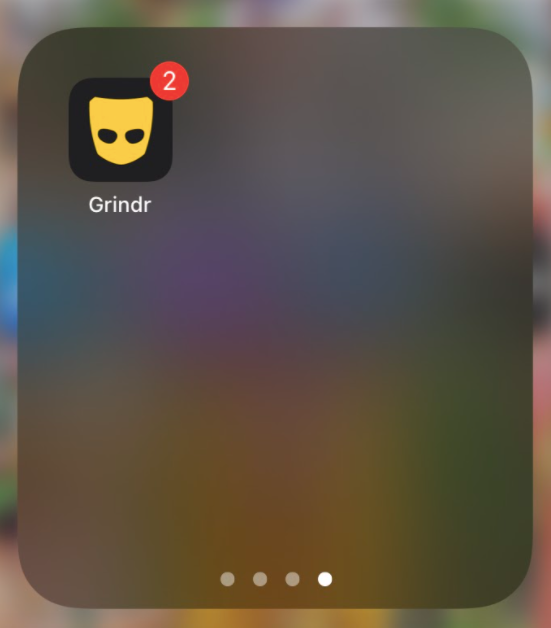This is the second installment in a series titled “An Ethnography of Grindr.” Read part 1 here.
“Send ass pic,” macho man said, messaging me from about 10 miles away.
I was sitting on the toilet, feeling little interest in renting a Zipcar to leave campus and meet up with macho man. But I was also feeling spunky that day: “You have to see it yourself,” I said.
“Send preview,” he said.
The response came so immediately that I got concerned. Why the hurry? Maybe he worked in the back of a movie theater and misplaced the previews, so he urgently needed to put something on the screen as moviegoers trickled in. I imagined dramatized pictures of my ass on the big screen, narrated by the soothing voice of Morgan Freeman, accompanied by a Doja Cat musical score. (And while chronologically it would have been a “preview,” I suppose anatomically it would have been a “postview,” since it’s my ass?)
“I’d rather not,” I replied. He immediately blocked me, disappearing from view. Shucks!
Knock, knock: It’s me, your psychosexual development
I’ve been on Grindr for a few months. It would be reasonable to ask, then, why did I download the app? But maybe the better question is, why did I wait so long?
Usually, I start things when I run out of reasons for avoiding them. I’m an undergrad of Indian descent, a bit below average height and my body hasn’t changed for the last four years or so. But over the last year, I went from gay to, well, gay gay. On the scale from “Zumba instructor” to “fisting,” I landed somewhere healthily in the middle. Also, I wanted to wait until I emanated so much sexual confidence that people would be surprised to learn that I wasn’t sexually active — only then would I visit the Dick’s Sporting Goods of my fellow man!
More pressingly, however: I was growing concerned that my body might explode from pent-up arousal. In terms of “skin hunger,” my skin was ready to punch someone at Llaga to grab the last serving of Deliciously Imperfect Vegetables. This parasympathetic storm came without so much as a warning!
To be clear, my gay identity was not at all new to me — rather, it hit me that things weren’t working anymore. I had no gay people in my life, and I needed at least two: one who would pound me, and another who would slap me across the face and tell me to get my act together. With pretty much no options left, and having heard all the hullabaloo, I went “unhinged” (stopped using Hinge), finally downloading the app-that-must-not-be-named.
Opening the app, again
First off, the app logo – a creepy shadow mask – really sets up the vibe. It doesn’t quite evoke queers in mesh shirts, holding hands and marching through the city singing kumbaya. It gives me something like a disgraced court jester living out his days in a 16th-century dungeon, or a scary burglar who came only to steal a single vowel.
On the app-missing-a-vowel, users in your area are presented in a “grid,” which has a smorgasbord of torsos and blank profiles to choose from. The app has no matching process — all profiles in the grid are visible, all are fair game.
In fact, there are two separate grids: “Nearby” and “Fresh.” If a hot new user joins the party, or if an existing user uploads a hot new photo, they might be shortlisted to the “Fresh” grid. Personally, it’s not entirely clear what “Fresh” is trying to convey — fresh off the panini press, or freshly squeezed through the juicer, or fresh out of a sexual awakening caused by the smell of Old Spice? It’s anyone’s guess. Otherwise, users eventually make their way to the “Nearby” grid, which is much larger and less elite. These users are all in the area, unlike the houses within each new ResX neighborhood.
In each grid, “Active” users show up as green dots on their profiles — meaning they currently have the app open, or that they closed it fewer than 10 minutes ago (presumably to have a good cry). After a user becomes inactive, the green dot goes away, but their profile stays on the grid for about an hour. I suppose that Grindr is trying to mimic in-person interaction: Queer men are “Active” once they physically enter the room, but the smell of Old Spice lingers up to an hour after they leave.
By clicking on anyone on the grid, you can open and view their profile. Then, you might stop to ponder whether to “tap,” message or send them a picture, such as a shirtless mirror selfie with an expressionless face. While you’re deciding what to do, you can expect to get interrupted pretty much every time by a pop-up ad — most likely for a low-rent version of Candy Crush that looks as if it’s from before gay marriage was legal.
Still, you might be surprised to learn how much can happen in an hour on the grid, especially with the honor and privilege of the “Fresh” designation. I’m talking about not just the classic “heyy,” but also the fun messages like “Need head now?”, “Show me your underwear” and even sugar daddy requests with “No sex required!” (I suppose those could be strung together into a poorly written infomercial?) Once, a user with a blank profile sent me a description of his body, in gross anatomical detail, with the admission that he was married — but with no action item proposed to me whatsoever.
Regardless, you can expect to receive lots of pictures of men’s cock-a-doodle-doos. Oh, and what’s the plural of anus? Ani? Anunen? Anopodes? Whatever it is, you can expect some pictures of those, too. I suppose an unexpected benefit of joining Grindr is preparation, in case you ever need a prostate exam.
At the top of the screen you can find the “Viewed Me” feature, an icon with a number representing how many users have viewed your profile during Earth’s last rotation. In general, this number reflects the activity level of Grindr and can fluctuate widely. For example, viewing activity surges just before the weekend, or when Cher is within 1,000 miles. It also surges when Lorde releases a new album, as Lorde’s releases often cause major disruptions to the gay circadian rhythm. On the other hand, it decreases whenever Joe Rogan releases another podcast episode, or when Kevin Hart tries to apologize for something.

In the current version of the “Viewed Me” feature, if you’re active while someone clicks on your profile, you can watch the number tick up, and feel the accompanying dopamine rush. If you click on the eye, you can see the profile of your most recent viewer. But for the rest, you can see only a blurred photo with no name — if their profile even has a name or photo in the first place.
Object permanence, impermanent objects
Grindr introduced the “Viewed Me” feature about two years ago. From some digging online, I gleaned that it was met with mixed reviews — some users complained it made them overly self-conscious about their activity on the app. In my experience, I often find my views have jumped when I return after briefly going inactive — when my green light was gone, ironically. Why are we so awkward about letting others know that we’ve seen them?
Grindr is nowhere close to art, but as they say, “art reflects life.” Through my years at Stanford, when I’ve entered a space with another queer man present, we have often both skirted around, trying to size each other up through fleeting glances. Sometimes, queer men have refused to look in my direction at all, even when I was speaking to them. Granted, Stanford might be a special case — a perfectly manicured country club, with a blurred line between the personal and professional. And the student body here is large enough to have an abundance of queer men, but also, like, only 12.
Still, seeing was always an action, long before Grindr made it one. My question, at the risk of sounding corny: We’re ready to preview each other’s asses, but why is it so hard to preview each other’s hearts?
It’s possible that queer men play our cards close to our chests, revealing ourselves strategically, to either communicate a lack of interest or mitigate the impact of possible rejection down the line. But also, I think that many of us never had the chance to be cute and stupid as kids. We couldn’t hold hands by the water fountains in, say, fifth grade, or get scolded for dancing too close at the school dance in, say, also fifth grade. And here we are, interacting anonymously on the burglar app — and sometimes, avoiding vulnerability as if herpes could be transmitted by eye contact. We have to figure out how to be children, but with adult consequences. It’s like when Zoom starts lagging, but instead of audio and video, the delay is between our bodies and the Western cultural script for our existence.
And here, another reason I waited so long to download Grindr: Before, I didn’t know how to be seen by other queer men because I didn’t know how to see myself. Gay, brown, ridiculous — I reached a point where I couldn’t see the parts of me come together and form a coherent person. How can you accept yourself if you can’t even see what you’re accepting?
I’d been putting myself one step below the queer men “out there,” who were part of some vague “queer community” from which, as it turns out, many of us feel disconnected. I’d been feeling a yearning which I confused for many things — the need for a changed body or face, or a relationship, or even a different academic path — but really, it was a yearning for a view of myself. When I validated what I could see, my life transformed. I realized: to think that we’re so special that we belong on a plane lower than everyone else is ego, not humility. Parallel to this understanding of myself came an understanding of what I should often expect from queer men — a request for my postview, or an unsolicited picture of their Hoover Tower.
Queer men: I wonder if we ever see each other and are afraid to admit it? Or, have we yet to see ourselves? It may be a lifelong project to see either, if we ever can. But in the style of object permanence, maybe we are all like ethnographers: Now you see me, now you don’t — but you know that I’m still here.
This article is part of a series on sex, love and relationships in the digital age and during the pandemic.
Contact The Daily’s The Grind section at thegrind ‘at’ stanforddaily.com.
